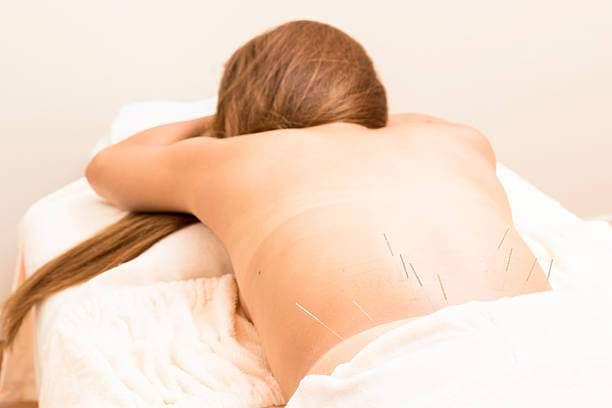
Meet Ms. Amy Chen, a 35-year-old hard-working office worker who spent a lot of time sitting at a desk. She was married with two young children and was the primary caregiver for her elderly parents. She was also under a great deal of stress due to her demanding job and family responsibilities. Her sciatica problem started when she could not stand up one day from her chair at the office, which she described as a rapid crack and lack of mobility. She started to feel pain in her lower back and on the front side of her thigh. She feels worse when she remains still and alleviated when she try to move herself or walk around with some difficulties.
She had been suffering from sciatica for several months and had tried various treatments with little to no improvement. She was desperate for a solution and was willing to try anything to find relief.
After conducting a Palpation we can appreciate stiffness on the lower back radiating to the lower posterior side of the gluteus, with shooting pain down the leg.
Tongue: slightly purple hue
Pulse: Full and Wiry
Diagnosis: Invasion of Wind Cold leading to stagnation of Qi in the Bladder and Gallbladder channels sinews.
Brief Pathology aetiology:
The Governing vessel is intimately connected to Tai Yang and Wei Qi, overtime if not able to motivate Tai Yang can easily prone to problems of the channel sinew wich become prone to invasions of pathogenic factors, and then moving across the gallbladder channel sinew.
The pathology of Qi and Blood Stagnation in the Lower Jiao in Chinese Medicine is a condition in which the flow of Qi and Blood in the lower body becomes blocked, leading to pain and stiffness in the lower back and legs. This blockage can be caused by a variety of factors, including emotional stress, physical trauma, sedentary lifestyle, and improper posture. When Qi and Blood are not flowing smoothly, they can become stagnant and lead to pain, inflammation, and other symptoms.
Practitioner Recommendation: Acupuncture and Tui Na Physiotherapeutic massage.
Treatment Principle: Open and strengthen the Governing Vessel, expel pathogenic factor, warm and dredge the Bladder and Gallbladder channel sinews and activate the circulation of Qi and Blood.
Points prescription:
Yaoshu point: located on the posterior midline, facing the sacral hiatus, Yaoshu is one of the most commonly used points to clear congestion in the Du Meridian and the Zusanyang meridians.
Yaoyangguan point: this point is often combined with the Shenshu, Dachangshu, and Baliao points for acupuncture or massage to treat ailments such as lumbosacral pain clinically.
Chengfu points: these points are located at the mid-point of the horizontal line under the buttocks. To relieve ailments such as lower back pain, massage the Chengfu points upward with the pulp of your index finger, middle finger, and ring finger.
Jiaji points: TCM practitioners often select the Jiaji points for acupuncture or massage when treating the spine or related illnesses.
ShenShu (BL23): House of the kidneys. The Shenshu point is an ideal choice for those who want to replenish kidney qi, whether through acupuncture or massage.
Dachangshu (BL25): these points can relieve nerve compression in the case of lower back and lower limb pain, numbness, or muscle atrophy.
Huantiao (GB30): for lower back and leg pain, massage from the Huantiao point downward to the Weizhong, Chengshan, and Kunlun points. This will dispel Wind, Cold, Dampness pathogens, and will also relieve pain, relax the tendons, and benefit the joints.
Baliao points: these points are located at the hip and sacrum, connecting the lower back at the top and the lower limbs at the bottom. Massaging the Baliao points alleviates pain in the lower back, and treats discomfort in the legs and feet.
Chengjin points: massage these points often, as they have the function of dispelling Heat and Dampness in the body and strengthening the lower back and knees.
Kunlun points: applying acupuncture or massage therapy to these points is effective in clearing congestion in the meridians and collaterals, dispersing Cold and relieving pain, promoting qi, and improving blood circulation.
Weizhong points: press the Weizhong points with your thumbs repeatedly. These points are suitable for treating all kinds of lower back and knee pain.
Chengshan points: by massaging the Chengshan points, you can dispel the pathogenic factors of the Wind and Cold, promote yang qi, and dredge the meridians.
Tui Na Physiotherapy Treatment.
For a patient suffering from sciatica and diagnosed with Qi and Blood Stagnation in the Lower Jiao, a Tui Na treatment could be an effective complement to acupuncture. During a Tui Na session, the practitioner would focus on the affected area, using techniques such as pressing and rubbing along the affected meridians to release any blockages and promote the flow of Qi and Blood.
Some common techniques used to treat lower back and leg pain include acupressure on the lower back and legs, gentle stretching of the affected area, and deep tissue massage to release any muscle tension and knots.
The patient was treated with a variety of complementary therapies to help alleviate their symptoms. Cupping was applied to the back using 10 glass cups to relax the muscles and promote the movement of Qi and Blood. This was done along the Bladder channel starting at BL12 and also over GB30 and BL54, with an additional Ah Shi point in the gluteus medius. The cups were left in place for 15 minutes while the practitioner opened the Governing Vessel using Yi zhi chan tui fa on SI3 on the left and BL62 on the right.
The practitioner then held the two points with their middle fingers and focused their attention on the Governing Vessel. The practitioner also worked on the patient’s legs, using various techniques such as Tui fa, Rou fa, holding-grasping, and Gun fa down the Bladder and Gallbladder channels to warm and dredge the channels. After removing the cups, the practitioner continued with the treatment.
At the adaptive level, woodlock oil was used with Tui fa and Rou fa to the back where the cups had been. At the analgesic level, various techniques were used such as An fa and compound versions of Na fa down the legs along the Bladder and Gallbladder channels, elbow Ya fa to BL36 and BL37, and Ya fa working deeply in the gastrocnemius.
The practitioner also applied kneading-grasping to BL60 and KD3 and pinching-grasping along the channel to BL67. Tui fa, Na fa, and Ji dian fa were used to dredge and disperse down the leg channels, and kneading-nipping with the thumb tip was done at each intervertebral space to clear the Governing Vessel. Ca fa was used down the Governing Vessel, and double-handed Gun fa down the Bladder channel from the top of the shoulders to the waist.
At the dissipative level, Na Fa and Pai fa were used along the channels. Passive movements were done, including Yao fa to both hips and Ban fa as an end-of-range twist while applying Ya fa and Rou fa to GB29 and the piriformis area. Ca fa with woodlock oil was also used to the patient’s sacrum and hips.
Overall, Tui Na massage can be a highly effective complement to acupuncture and herbal medicine in treating lower back and leg pain, including sciatica. By promoting the flow of Qi and Blood, reducing muscle tension and knots, and relieving pain, Tui Na can help to speed up the healing process and improve the patient’s quality of life.
Results:
Ms. Chen was amazed at the results. After just a few treatments, she began to feel significant improvement in her symptoms. Her lower back and leg pain was significantly reduced, and she was able to move more freely and comfortably. She continued with the acupuncture and ui Na Physiotherapeutic massage for several weeks and was eventually able to return to her normal activities without any pain.
Advise:
The practitioner advised the importance of making lifestyle changes to reduce stress and improve overall health. This included recommendations for regular exercise, a balanced diet, and relaxation techniques to help manage stress.
Backward walking is a simple and effective exercise that can benefit people experiencing lower back pain. To perform this exercise, simply walk backwards for 20 to 30 minutes twice a day, once in the morning and once in the evening. It’s important to note that when walking backwards, your sense of space will be reduced, making it easier to lose your balance and fall. To prevent this, walk steadily and avoid going too fast. Remember to look behind you periodically to maintain control of your direction.
For individuals with chronic lumbar spine problems, persistent backward walking over an extended period can be especially helpful in alleviating severe lower back pain. So if you’re looking for a low-impact exercise that can potentially reduce your back pain, consider adding backward walking to your daily routine.
Ms. Chen was grateful for the help and advice she received and was committed to making the necessary changes to maintain her health and well-being.

